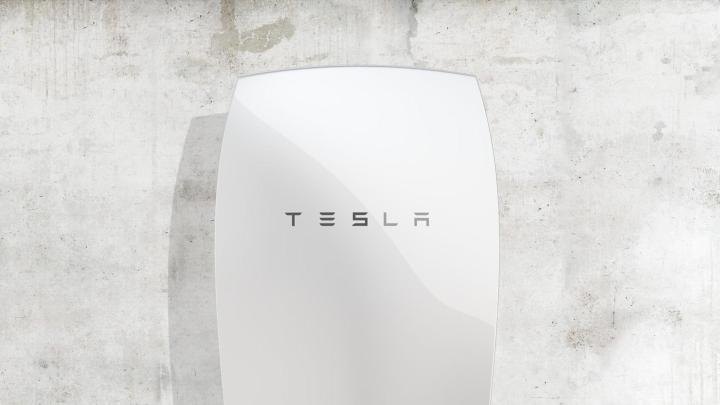Tesla wants to lead the charge on getting the United States, as well as the rest of the world, off fossil fuels. On April 30, the company announced its contribution to the cause with Tesla Energy, its suite of batteries for the home, businesses, and industry.
If the United States relied more heavily on renewable energy sources, Tesla CEO Elon Musk argues, we could move away from fossil fuels. One problem with this approach thus far has been inadequate battery technology, which makes it difficult to store solar energy that is generated during the day for nighttime use. Or, as Musk told reporters at the event, “The obvious problem with solar power is the sun doesn’t shine at night.”
Tesla’s solution is the Powerwall, a rechargeable lithium-ion battery. Homeowners will be able to store energy for use after dark, during blackouts, or when prices are high. The device would hook up to the local grid, so users could access conventional sources of energy whenever they chose.
“The issue with existing batteries is that they suck,” said Musk. They’re expensive, large, and unsightly. The 51-by-33.8-by-7-inch Powerwall, on the other hand, “looks like a beautiful sculpture,” he says. It comes with a 10-year warranty and you can mount it on the wall of your garage.
Available for order now and shipping this summer, the Powerwall will come in both 10 kilowatt-hours options, optimal for use as backup during a blackout, and 7 kilowatt-hour models, which homeowners can use for daily consumption in conjunction with solar power. Tesla’s price is $3,500 for the 10 kilowatt-hour model and $3,000 for the 7 kilowatt-hour version; neither includes inverter or installation costs. Although previously suggested by one analyst, Musk did not mention anything about customers being able to lease the batteries instead of buying them outright.
The Powerwall is meant for residential use; for businesses and industry there’s the Powerpack, which is “designed to scale infinitely.” That product will be available in a 100-kilowatt-hour version and can scale from 500 kilowatt-hours to over 10 megawatt-hours.
The future, as Musk sees it, is in batteries supplanting the need for power lines in remote areas that don’t currently have electricity. All of this is part of a larger plan to curb carbon-dioxide emissions, and solar panels and batteries are the path he sees as getting us there. It would take 900 million Powerpacks to transition the world to completely renewable energy generation, he estimates. “It’s something that we must do and that we can do and that we will do,” he said.
Editors' Recommendations
- Why you need to buy this gigantic portable home battery now
- Australia is building one of the world’s largest batteries using Tesla tech




